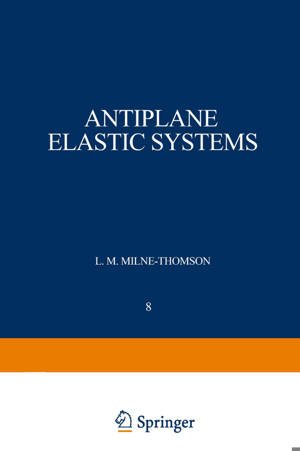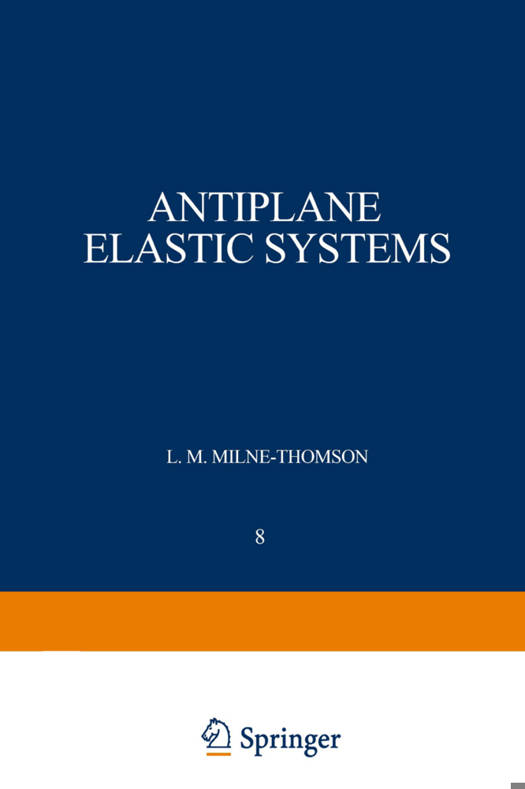
- Afhalen na 1 uur in een winkel met voorraad
- Gratis thuislevering in België vanaf € 30
- Ruim aanbod met 7 miljoen producten
- Afhalen na 1 uur in een winkel met voorraad
- Gratis thuislevering in België vanaf € 30
- Ruim aanbod met 7 miljoen producten
Zoeken
Omschrijving
The term antiplane was introduced by L. N. G. FlLON to describe such problems as tension, push, bending by couples, torsion, and flexure by a transverse load. Looked at physically these problems differ from those of plane elasticity already treated * in that certain shearing stresses no longer vanish. This book is concerned with antiplane elastic systems in equilibrium or in steady motion within the framework of the linear theory, and is based upon lectures given at the Royal Naval College, Greenwich, to officers of the Royal Corps of Naval Constructors, and on technical reports recently published at the Mathematics Research Center, United States Army. My aim has been to tackle each problem, as far as possible, by direct rather than inverse or guessing methods. Here the complex variable again assumes an important role by simplifying equations and by introducing order into much of the treatment of anisotropic material. The work begins with an introduction to tensors by an intrinsic method which starts from a new and simple definition. This enables elastic properties to be stated with conciseness and physical clarity. This course in no way commits the reader to the exclusive use of tensor calculus, for the structure so built up merges into a more familiar form. Nevertheless it is believed that the tensor methods outlined here will prove useful also in other branches of applied mathematics.
Specificaties
Betrokkenen
- Auteur(s):
- Uitgeverij:
Inhoud
- Aantal bladzijden:
- 266
- Taal:
- Engels
- Reeks:
- Reeksnummer:
- nr. 8
Eigenschappen
- Productcode (EAN):
- 9783540028055
- Verschijningsdatum:
- 1/01/1962
- Uitvoering:
- Paperback
- Formaat:
- Trade paperback (VS)
- Afmetingen:
- 152 mm x 229 mm
- Gewicht:
- 371 g

Alleen bij Standaard Boekhandel
+ 220 punten op je klantenkaart van Standaard Boekhandel
Beoordelingen
We publiceren alleen reviews die voldoen aan de voorwaarden voor reviews. Bekijk onze voorwaarden voor reviews.








